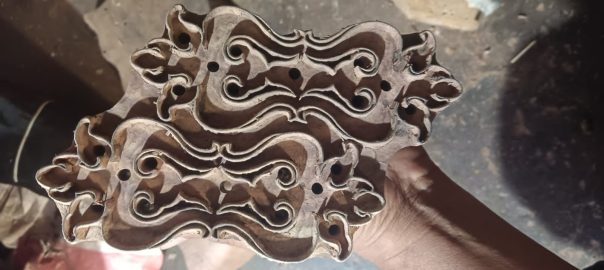
Kalamkari, named from the Persian words “kalam” (pen) and “kari” (craftsmanship), reflects an ancient art form passed down through generations..
This traditional Indian technique involves hand-painting or block-printing on fabric, creating intricate designs that tell stories of mythology, nature, and history.
The process of Kalamkari printing is as captivating as the final product, requiring skill, patience, and a deep respect for tradition.
### The Origins of Kalamkari
You can trace the origins of Kalamkari back over 3,000 years to the regions of Andhra Pradesh and Gujarat in India. Artisans originally used it to depict scenes from Hindu epics like the Ramayana and Mahabharata, serving as a form of storytelling.
Over time, it evolved, incorporating Persian influences, especially during the Mughal era, which introduced new motifs and techniques.
### The Process of Kalamkari Printing
Kalamkari printing is a labor-intensive process, involving multiple stages that demand precision and expertise.
The entire process is done by hand, preserving the authenticity of this ancient craft.
#### 1. **Preparing the Fabric**
The first step in Kalamkari printing is preparing the fabric, usually cotton or silk.
They soak the fabric in a mixture of cow dung and bleach to remove impurities and ensure the natural dyes adhere better.
After soaking, they wash the fabric thoroughly and then sun-dry it.
#### 2. **Sketching the Design**
Once the fabric is ready, the artisan sketches the design onto the fabric using a pointed bamboo or date palm stick dipped in a solution made from fermented jaggery and water.
This step requires a steady hand and an artistic eye, as the sketch forms the foundation for the entire piece.
#### 3. **Applying the Colors**
Explore the rich history of Kalamkari printing, where artisans blend intricate hand-painting and block-printing techniques to create stunning, storytelling fabrics.
– **Black** is derived from blending jaggery and iron fillings.
– **Red** comes from the bark of the madder tree.
– *They source **yellow** from pomegranate peels or turmeric and obtain **blue** from indigo.
The artisan carefully outlines the areas for color, then fills them in with a brush or pen.
#### 4. **Block Printing**
In addition to hand-painting, Kalamkari also involves block printing. Wooden blocks, intricately carved with various motifs, are dipped in natural dyes and then stamped onto the fabric.
This technique allows for repetitive patterns and adds depth to the design.
#### 5. **Washing and Finishing**
The final step involves washing the fabric multiple times to remove any excess dye and to soften the fabric.
They boil the fabric in a solution of cow dung and water to remove any lingering wax or impurities. After a final wash, they sun-dry the fabric to help fix the colors.
### The Significance of Kalamkari
Kalamkari is more than just a printing technique; it is a reflection of India’s rich cultural heritage.
The art of Kalamkari printing is a testament to the skill and dedication of Indian artisans who have preserved this craft through centuries.
As we embrace modern fashion and textiles, it’s essential to recognize and appreciate the traditional techniques
Kalamkari that continue to inspire and influence contemporary design.
By supporting this ancient art form, we not only help sustain the livelihoods of these skilled artisan ensure that this beautiful tradition endures for future generations.











